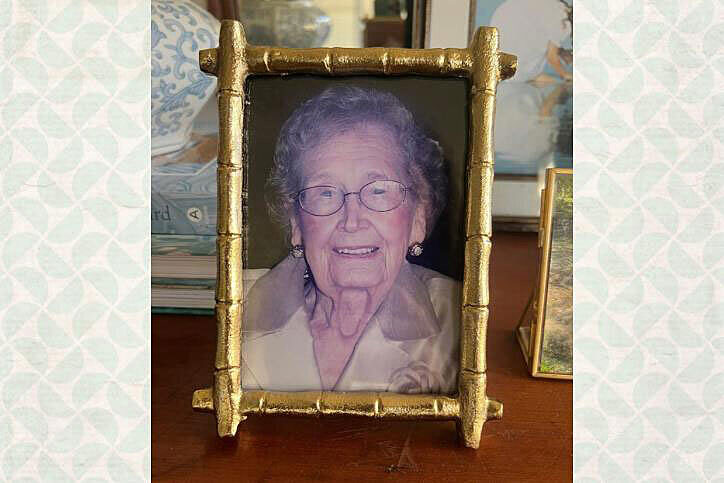Thrift-Tea Like That: Sipping, Clipping and Carrying On
Before thrifting became a trend, it was a way of life.
Every Thursday, my grandmother went to the library and the grocery store.
Always both. Always in that order.
With a carefully clipped stack of coupons, a list in her purse, and a sense of purpose in her stride.
She was a bookkeeper by profession—meticulous, practical, and exacting.
She understood the value of tracking what comes in, what goes out, and what’s truly worth keeping. But she was also a keeper of books in the gentler sense. She balanced checkbooks with the same steady care she gave to choosing her next novel.
Mrs. Rubye, as she was affectionately known, lived through the Great Depression, and it shaped everything—how she shopped, what she saved, and the grace with which she stretched a dollar. She knew how to do more with less. And she did it with intention, pride, and quiet strength.
Right next to her penchant for saving was her passion for story - best told in books and antiques.
She saved dimes in a large glass water cooler jug.
Patiently. Quietly. Over time.
Until she had enough to buy the treasures she loved—pieces that had already lived a life and were ready for a new chapter.
She borrowed books from the library every week. There was something special in that type of balance—living within her means while surrounding herself with meaning.
She made sweet tea every morning.
First thing. Before the world asked anything of her.
She’d sip it slowly, and settle in with a book—
the day beginning with something sacred.
And always, the same cup.
A well-worn Tupperware tumbler, carried like a companion.
She took it everywhere—
to the store, to the library, to family gatherings and long drives.
Soft plastic, slightly stained, perfectly hers.
It wasn’t fancy.
But it held something more.
It held ritual. Comfort. Continuity.
She showed me that thrift isn’t scarcity - it’s skill and will.
It’s being creative. Resourceful.
It’s learning to appreciate what lasts, instead of constantly chasing what’s new.
These days, I find myself reaching back often for that wisdom.
For the pride she felt in getting a great deal.
For the joy she found in a well-loved antique.
As a child, I didn’t know I was learning thrift.
I just knew I loved being with her—especially on Thursdays.
I watched her sort coupons and helped pick out peaches. I was clearly paying close attention. One day as we walked out of the store, I announced, “They didn’t give you a receipt!” Even then, I was absorbing her way of life: intentional and fiercely self-sufficient.
My grandmother taught me that financial wellness isn’t just about money.
It’s about how you live.
How you spend.
How you make room for what matters—and find joy in what you already have.
It’s the steady rhythm of her Thursdays - and a quiet determination that said: beautiful things are worth waiting for.
What She Knew (And We Can Carry Forward)
In a world of rising prices and financial overwhelm, thrift has become radical again. But to a generation of rediscovery, it’s also deeply familiar.
In many ways, we’re returning to what Mrs. Rubye already knew.
We budget. We thrift. We save where we can, and spend where it matters.
Because thrift, at its best, is not just about money – it’s about meaning.
The lessons she lived are ones you can carry with you – just like sweet tea and a good book.
- Small savings matter.
Dimes in a jug. Coupons in a drawer. Tiny acts of financial care that add up to something beautiful. - Plan with purpose.
Thursday was for errands. She didn’t shop aimlessly—she shopped with a mission. - Use what you have.
Her Tupperware and butter containers lasted decades. So did her silver. She believed in lasting things—and lasting habits. - Spend with soul.
She didn’t deny herself joy. She simply made space for splurges - on antiques, on clothes, on stories in the making. - Borrow before you buy.
She never bought a book she could borrow. The library was her treasure chest.
Let’s Bring It Back
Thrift Thursday isn’t just a hashtag.
It’s a reminder that financial wellness can be built - not in big leaps, but in quiet, meaningful routines. Sometimes, it looks like a coupon book, a worn library card, and a granddaughter who was soaking it all in.
Blog by Ginna Holleman, Fortera Chief Experience Officer
